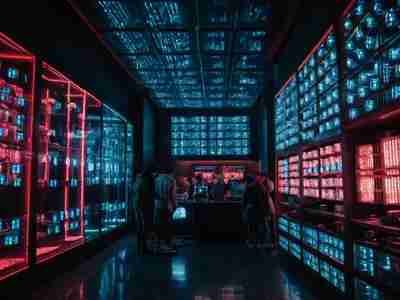Among other variations of lights, LED is one of the popular types, including in Saudi Arabia. A lot of buildings from homes, offices, or commercial structures have utilized this type of lighting for various purposes.
As in many parts of the world, there has been a growing utilization of this lighting in the country which drives the increasing demand for Saudi Arabia LED lighting market. According to a leading market research firm, GMI Research, Saudi Arabia LED lighting market size will see substantial growth in the years ahead. This rapid development is due to the rising lighting solutions integration within smart devices, the growing government initiatives and regulations regarding energy conservation, as well as the increasing standard protocol adoption for controlling lighting in the country.

What are the Strengths?
Its popularity is due to the many advantages and strengths that LED lighting offers.
- Low cost and save energy
LEDs are typically engineered to function on twelve to twenty four volts, and they offer greater light output per watt in comparison to incandescent bulbs. Energy-saving LEDs outperform incandescent bulbs by using significantly less voltage and achieving much higher light output per watt. It can result in an 80 percent reduction in electricity consumption.
- Long lifespan
Conventional incandescent lights have a short lifespan lasting only three thousand to four thousand hours on average. Meanwhile, LEDs boast an incredible lifespan of 100 thousand hours which is up to 25 times longer. If we use an LED just four hours in one day, it can last well over 60 years.
- More sustainable
LED lighting functions differently to traditional incandescent and fluorescent bulbs. It eliminates the use of filaments that burn out, reduces heat generation, and avoids the use of toxic materials. Unlike delicate filaments, LEDs are solid-state which makes them much more resistant to frequent bumps and vibrations. Illumination arises solely from electron activity in semiconductor materials with a lifespan akin to that of a typical transistor.
- Can adapt to the environment
It performs reliably across a broad temperature range of –40 degree Celsius to 85-degree Celsius, maintaining effectiveness under humidity levels below 65 percent. This makes them suitable for challenging environmental conditions.
- Versatility
From initial use in number displays and indicators, LEDs have expanded into various applications including architectural illumination, exit signage, accent and task lights, outdoor lights, among others.
The Weaknesses
Despite its numerous strengths, there are weaknesses as well.
- Low power output
A single LED has a low power output thus the luminance is relatively low. Therefore, more than one LED is necessary in the parallel connection, for instance in backlights of automobile. In addition, even though one lamp is not expensive, more LEDs means more expenses.
- Short lighting coverage
In spite of its brightness has seen improvement, but the lighting coverage remains short with only tens meters. Therefore, this type of lamp is more suitable for short-range application in the lighting system. However, as new technology keeps underway in the development of Saudi Arabia LED lighting market, we can expect to see more innovations. One of them is the expansion of its lighting coverage.



